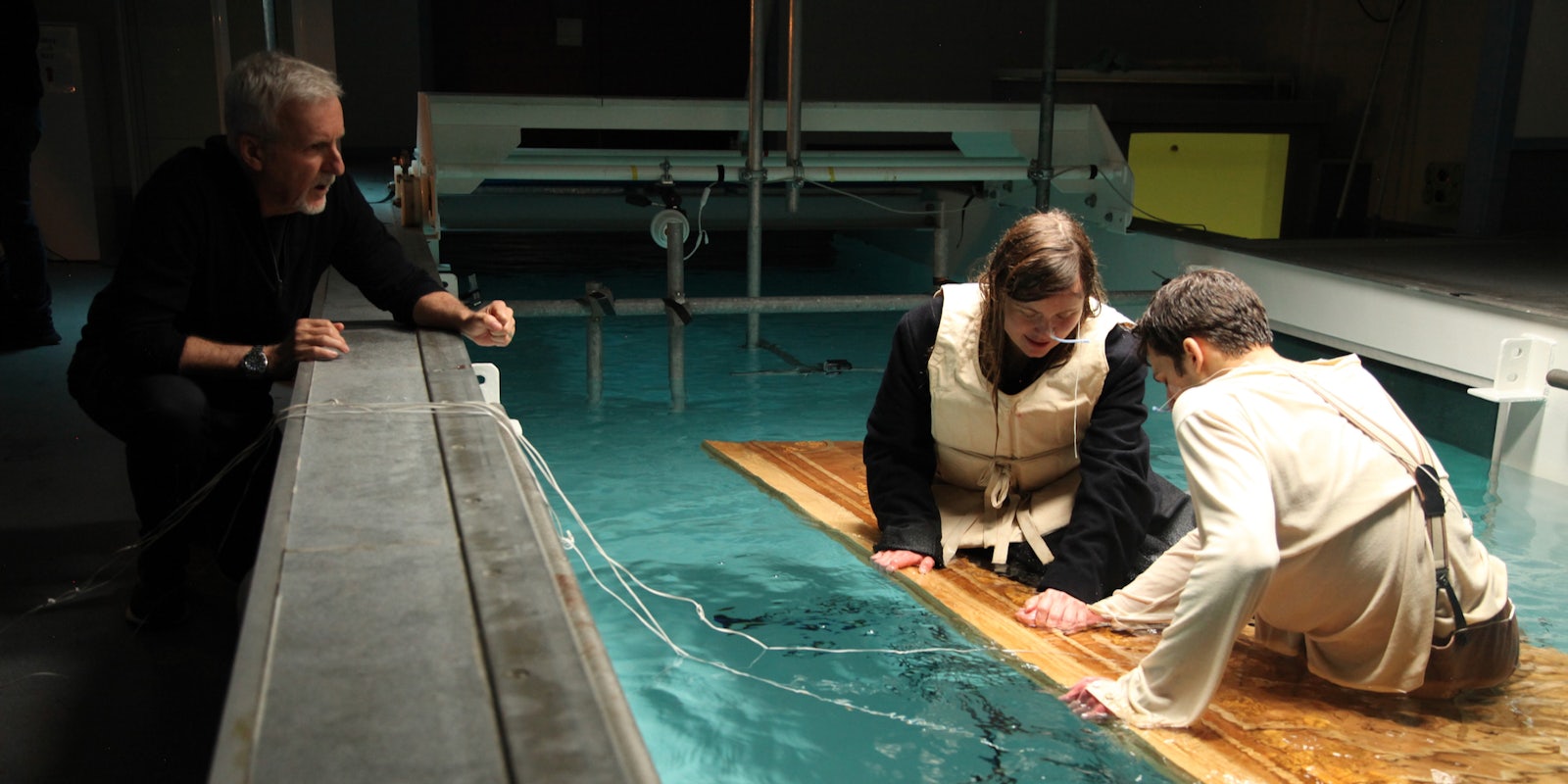Analysis
I have a confession: I’ve never seen Titanic in its entirety. I was too young to have caught it in theaters the first time, and for a while, I was a contrarian even though I had an “obsessed with the Titanic’s sinking” phase.
With Titanic’s theatrical rerelease for its 25th anniversary later this week, I’m changing that soon. But its visual language is ubiquitous online: I didn’t have to see the movie to know about the decades-long debate that Jack and Rose both could have fit onto that floating door amid the wreckage and survived.
The argument appears to have driven director James Cameron up a wall for the past 25 years, and it’s at the top of mind for National Geographic’s bizarre new special Titanic: 25 Years Later With James Cameron. (It’s streaming on Hulu.)
The first half recycles footage of experiments from NatGeo’s 20th-anniversary special that Cameron and his crew conducted to see how accurate his movie is compared to what we’ve learned about the Titanic since the movie’s release.
The second half shows just how far Cameron is willing to go to disprove the theory that Jack would have survived. He hired Josh Bird and Kristine Zipfel to stand in for Jack and Rose. He dressed them in the same costumes as the characters, put them in a water tank in his New Zealand lab, and had them test various methods of holding onto the door.
The goal, as one collaborator noted, was “taking them to clinical hypothermia” (when their body temperature hits 95 degrees Fahrenheit) to indicate when Jack’s body would’ve started shutting down. (Cameron concedes that “Jack might have lived…But there’s a lot of variables.”)
What struck me watching 25 Years Later—and 20 Years Later immediately afterward—is how different in tone the two specials are, even when they feature the same footage.
The older one includes interviews with some of the passengers’ descendants and has a sense of wonder around discovering what was in the wreckage and the extraordinary humanity on display. The newer one is more vindictive as Cameron attempts to prove the internet wrong.
Those older experiments feel more like he’s showboating than broadening our perspectives about a tragedy where nearly 1,500 people died. And it’s not pleasant watching Bird violently shivering in cold water over and over again for science.
Why it matters
Cameron’s push to scientifically justify the end of Titanic might be petty, but at its core is a simple reminder of the power Titanic holds: Viewers were so adamant about Jack’s potential for survival because Titanic got them invested in its romance and made them care, even if we knew it was doomed from the start.


